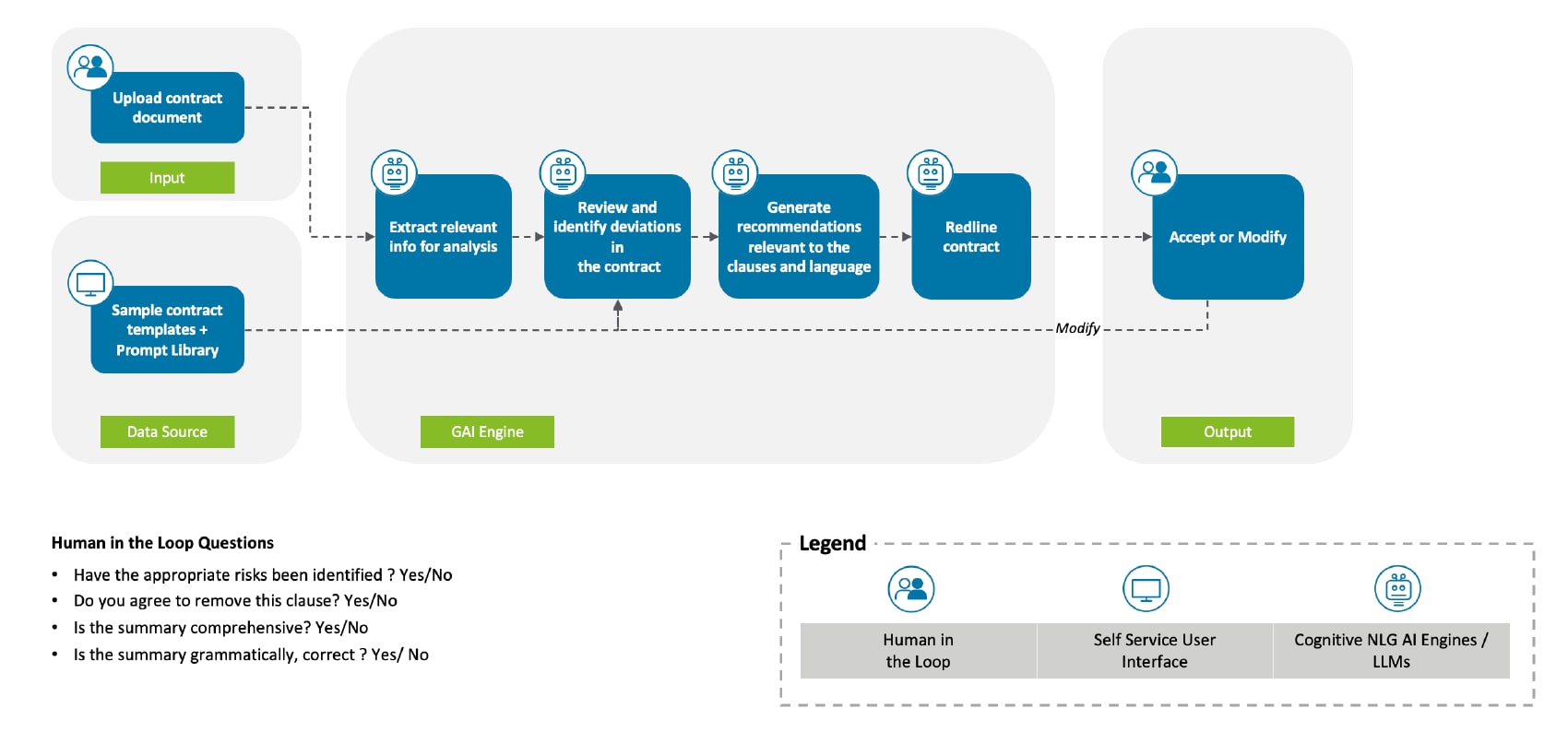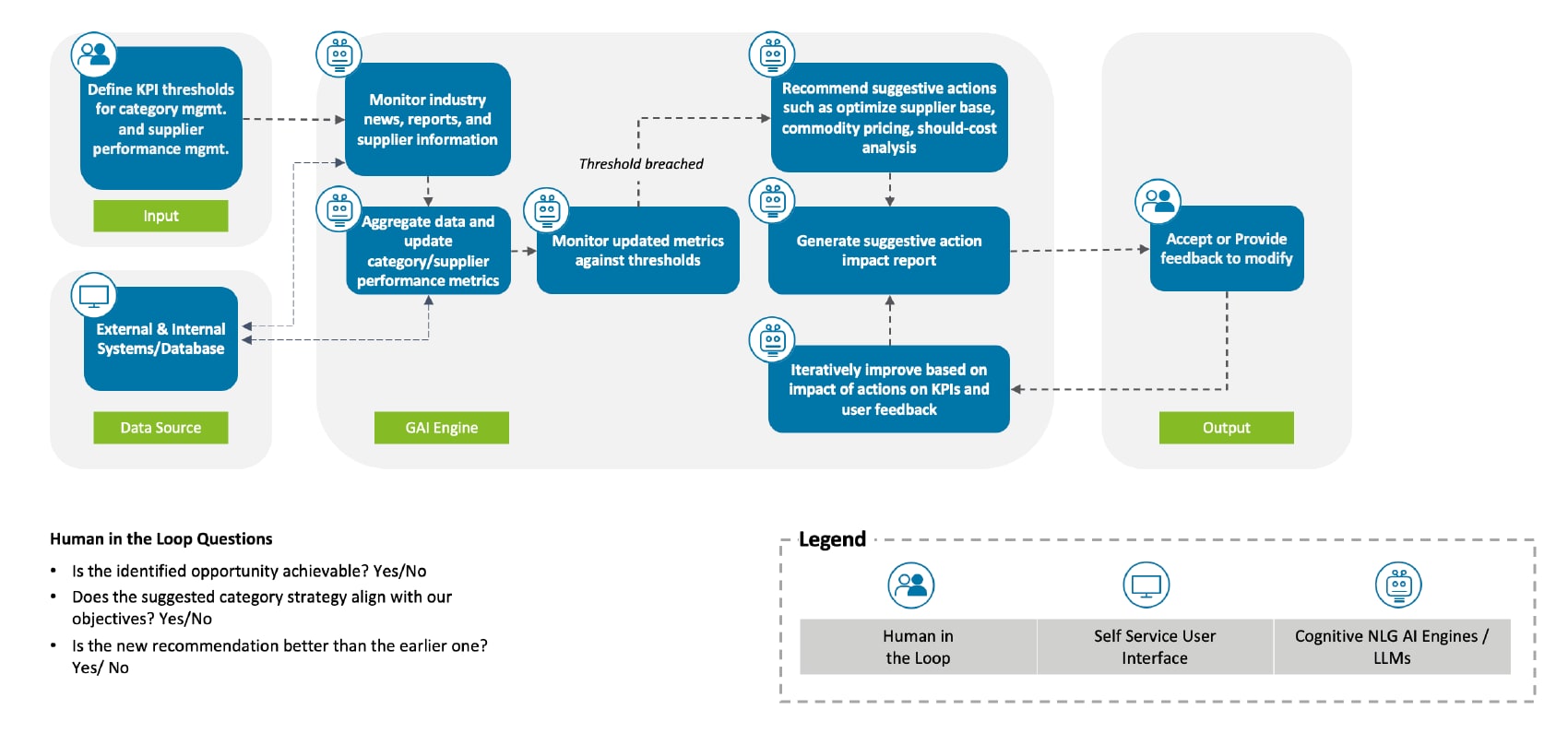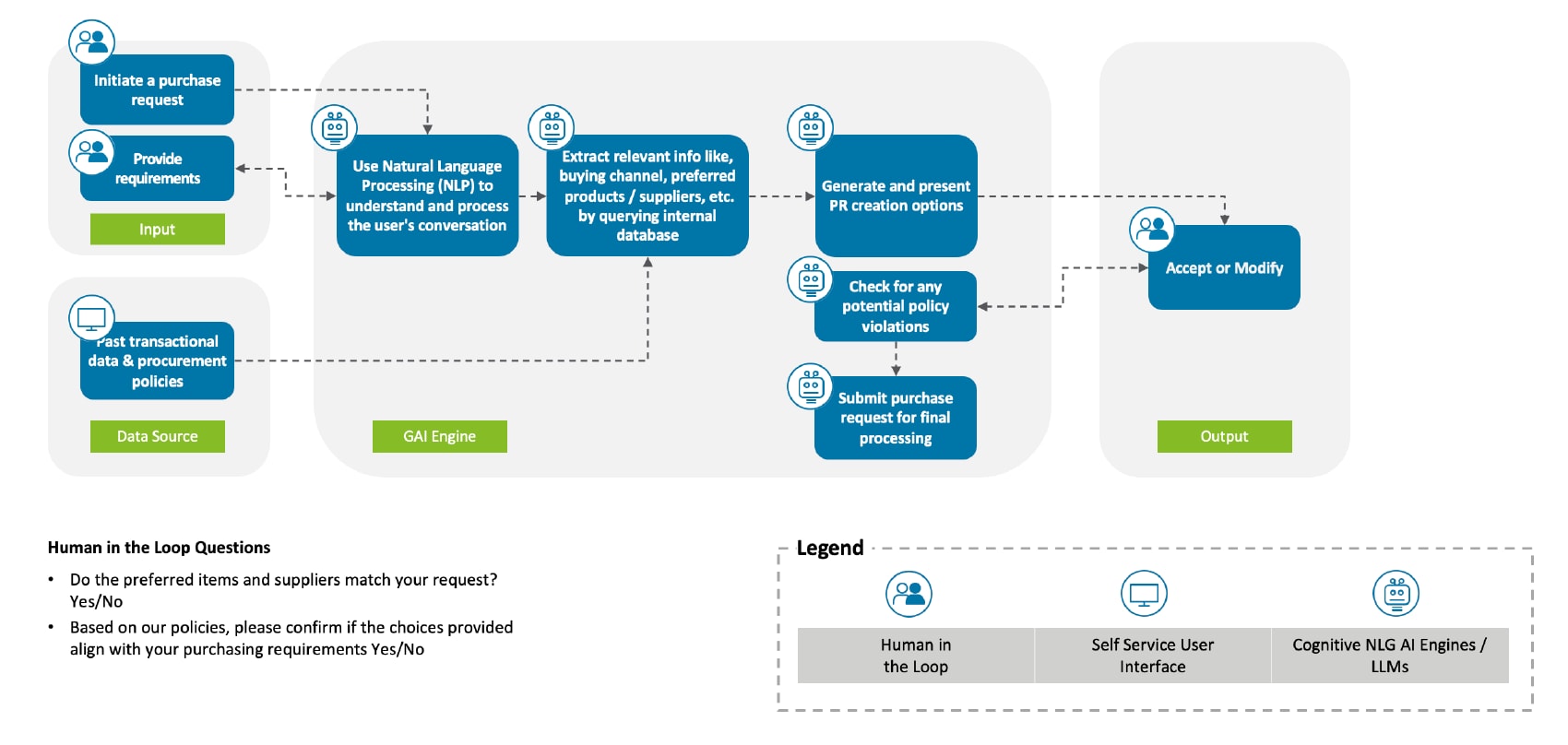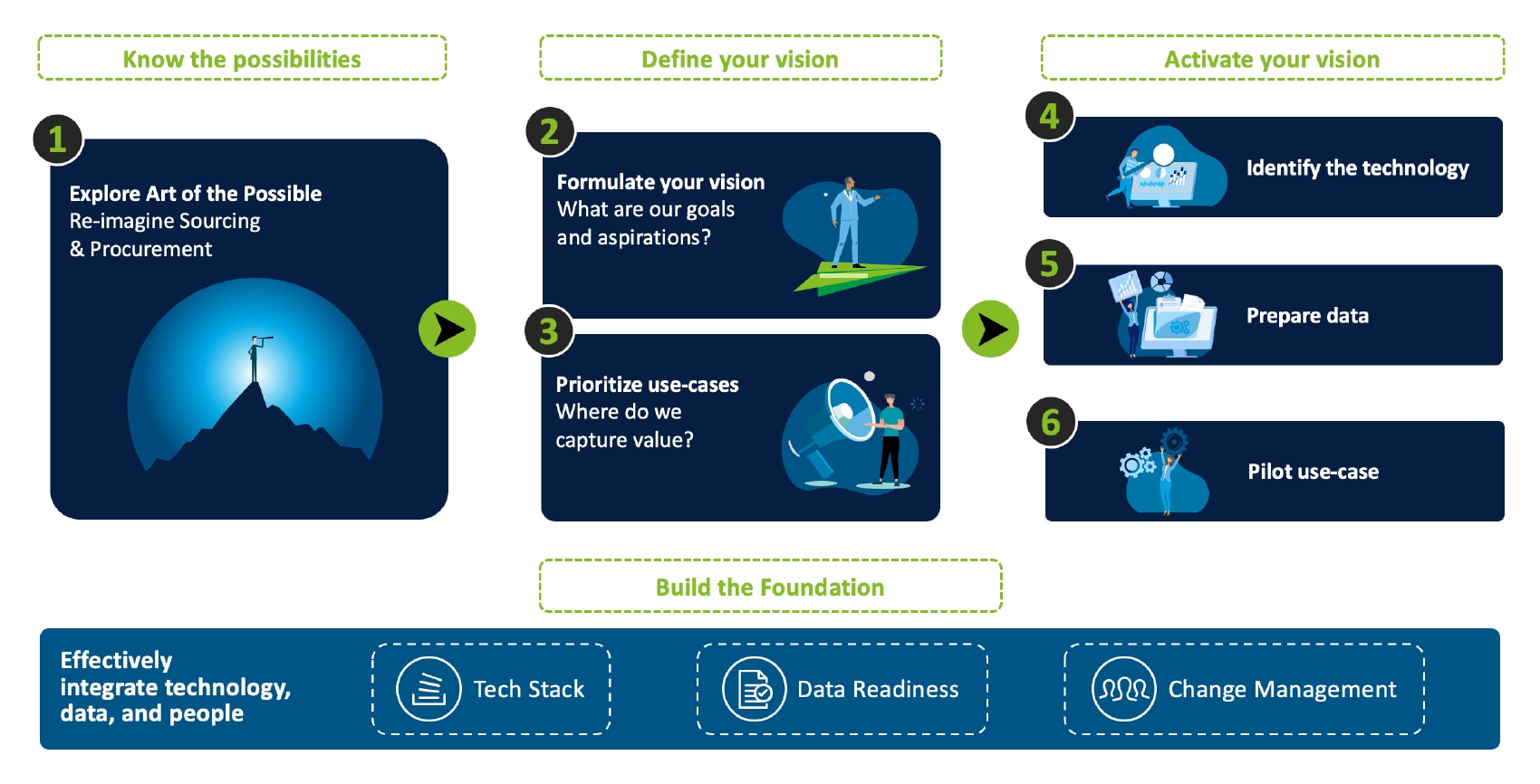Transforming Digital Procurement With Generative AI | Deloitte US has been saved
The era of artificial intelligence (AI) and procurement
Recent breakthroughs in Generative AI are evolving digital procurement tools to include next-gen capabilities. Leading digital procurement solutions such as Ariba, Coupa, Ivalua, GEP, and niche players have started harnessing the capabilities of Generative AI to revolutionize procurement processes, ushering in an era of unparalleled efficiency and strategic decision-making.
We’ve touched upon the high-level impacts of Generative AI on sourcing and procurement in our first blog post in the series on Generative AI and its impacts on sourcing and procurement.1 In this blog, we delve into how Generative AI can impact various digital procurement tools through some high-impact use cases and discuss adoption challenges and the way forward.
Evolution of digital procurement tools with Generative AI
With the onset of Generative AI, while procurement organizations are working to reshape themselves, solution providers are simultaneously augmenting the functionality of their tools. Many existing players are adding capabilities to:
- Eliminate manual/redundant tasks to enable users to focus on strategic areas.
- Simplify the user experience through a chat-based interface.
- Provide end-to-end data analytics and recommendations.
The graphic below depicts the approach to Generative AI from some of the leading solution providers in the digital procurement space:
 Additionally, multiple niche players continue to deploy enhanced capabilities such as autonomous sourcing, automated negotiations,2 etc., leveraging their focused knowledge of AI and specialized offerings.
Additionally, multiple niche players continue to deploy enhanced capabilities such as autonomous sourcing, automated negotiations,2 etc., leveraging their focused knowledge of AI and specialized offerings.
High-Impact use cases for Generative AI in sourcing and procurement
Generative AI impacts are manifold across the sourcing and procurement cycle. We’ll use the following three use cases to help you visualize the magnitude and scale of these impacts. While the proposed future state is a thought experiment in how Generative AI tools will address specific use cases, the “current tools” section highlights existing solutions with similar functionalities.
Use case 1: Contract review
- Current state: Currently, contract review can be a highly tedious process, requiring manual effort from subject matter experts across various areas, such as legal, risk, business, and finance. Reviewers need to manually examine the contract text to redline deviations and resolve issues by referring to past contracts, company policy library, and legal and statutory regulations. As a result, the contract review process can span several days to weeks.
- Future state: At its core, a Generative AI-based contract review tool could ingest the contract and review the structure as well as individual clauses. These clauses could be compared against its repository of past contracts, company policy library, and legal statutory requirements to identify concerns and provide mitigation recommendations. With the tool encompassing specialized knowledge, reviewers no longer need the same depth of knowledge, reducing the need for the level of expertise required by reviewers.
Click image to enlarge
- Potential impacts: These include a reduced contract review turnaround time and reduced requirements for specialized experts in multiple process areas.
- Current tools: The current marketplace for contract review tools is growing rapidly and includes players such as Blackboiler, Henchman, and Kira. These tools offer varying capabilities within the review process, from specialized legal reviews to holistic contract reviews.
Use case 2: Category strategy generation
- Current state: Current tools offer limited capabilities and focus on data visualization and analytics. Category management is primarily a specialized exercise, with category managers manually reviewing relevant data across multiple sources, creating various reports from their source-to-pay (S2P) systems, and finalizing the category strategy using all this information. This requires a high degree of specialization and limits how many categories a single category manager can handle.
- Future state: A Generative AI-based tool that can extract live intelligence from multiple websites could streamline the process significantly. Coupled with the access to real-time transactional data from S2P solutions, the tool would be able to identify areas requiring intervention, layer in market intelligence, and recommend strategies for resolution.
Click image to enlarge
- Potential impacts: These include a reduced need for specialized category experts for each category, along with increased automation for significant efficiency gains over the current mostly manual process.
- Current tools: The presence of existing tools in this area is limited, but we are beginning to see solutions such as GEP, Jaggaer, and SAP working to develop AI-based modules to provide intelligent recommendations to category managers. Deloitte’s AIOPS.D is also developing capabilities to assist category managers in identifying savings/improvement opportunities and suggesting recommended actions.3
Use case 3: Guided buying
- Current state: Current S2P solutions provide an e-commerce-like buying experience for users in which they can search for specific keywords, leading them to a catalog item form with a preferred supplier. These tools offer limited capabilities to flash policy warnings based on particular transaction parameters. The end user, however, still needs to navigate the tool and actively make the right choices. Organizations, therefore, must build controls to ensure compliance with policies.
- Future state: A Generative AI-guided buying tool would bring in a chat-based user interface, minimizing the need for users to be familiar with the tool interface. Users could converse naturally with the tool, explaining what they want to purchase. Based on the LLM data models, the tool can lead the user through the process of the right buying channel. Users are provided with choices between preferred items and suppliers. The system alerts the user to potential policy violations and submits the purchase request on behalf of the user in the solution once all the required information has been collected.
Click image to enlarge
- Potential impacts: These include a reduced need for user training, increased spend with compliant channels and preferred suppliers, and improved efficiency due to high-quality purchase requests being created by the tool.
- Current tools: We’re now witnessing S2P solutions integrating AI into different aspects of the guided buying process: Coupa, GEP Smart, Ivalua, SAP Ariba, and Zycus offer various capabilities such as item recommendations, conversational AI-based guided buying assistants, etc.
Deloitte’s AIOPS.D also offers capabilities in this area.
Transform your procurement organization through Generative AI
While the use cases discussed above might be an interesting read, they remain a thought exercise until implemented. To unlock the true value of Generative AI, an enterprisewide transformation is likely needed. Organizations should have a clear methodology for embarking on such a transformation and consider the following:
1. Know the possibilities.
- Explore the art of the possible: Think beyond existing limitations and conventional approaches to unlock Generative AI’s transformative potential.
2. Define your vision.
- Formulate your vision: Adopt a comprehensive strategy to enhance the procurement organization through well-defined use cases, technological decisions, planning, and stakeholder engagement.
- Prioritize use cases: Create a detailed list of possible use cases for Generative AI adoption. Then prioritize use cases based on risk, impact, feasibility, and cost to help maximize the benefits of Generative AI.
3. Activate your vision.
- Identify the technology: Focus on building a robust foundation that can accommodate data-driven AI improvements over time and handle computational demands. This architecture should facilitate efficient data gathering, cleansing, and organization from multiple sources and integrate seamlessly into existing solutions and workflows.
- Prepare data: Systematically prepare data by identifying relevant data sources, collecting data from various channels, cleaning and preprocessing, and contextualizing the data to make it actionable. At the same time, consider aspects of data security and compliance. Organizations should be cautious to maintain control when utilizing their data with AI tools.
- Pilot use case: Initiate Generative AI implementation in select high-impact use cases. With experience, progressively expand into more sophisticated AI use cases, gradually transitioning from simple to complex tasks, unlocking greater value from Generative AI.
- Build the foundation: In parallel, continue building the foundation to effectively integrate technology stack, data readiness, and change management.
Click image to enlarge
Moving forward
Integrating Generative AI into digital procurement solutions marks a turning point that will likely reshape the procurement landscape. Many digital procurement players are embracing this transformative technology to minimize non-value-added tasks and enhance the productivity of their users. By following a structured approach to a Generative AI-based transformation, organizations can harness the full potential of Generative AI. The graphic below provides an example of some of the strategic considerations underlying the approach deployed by some solution providers:
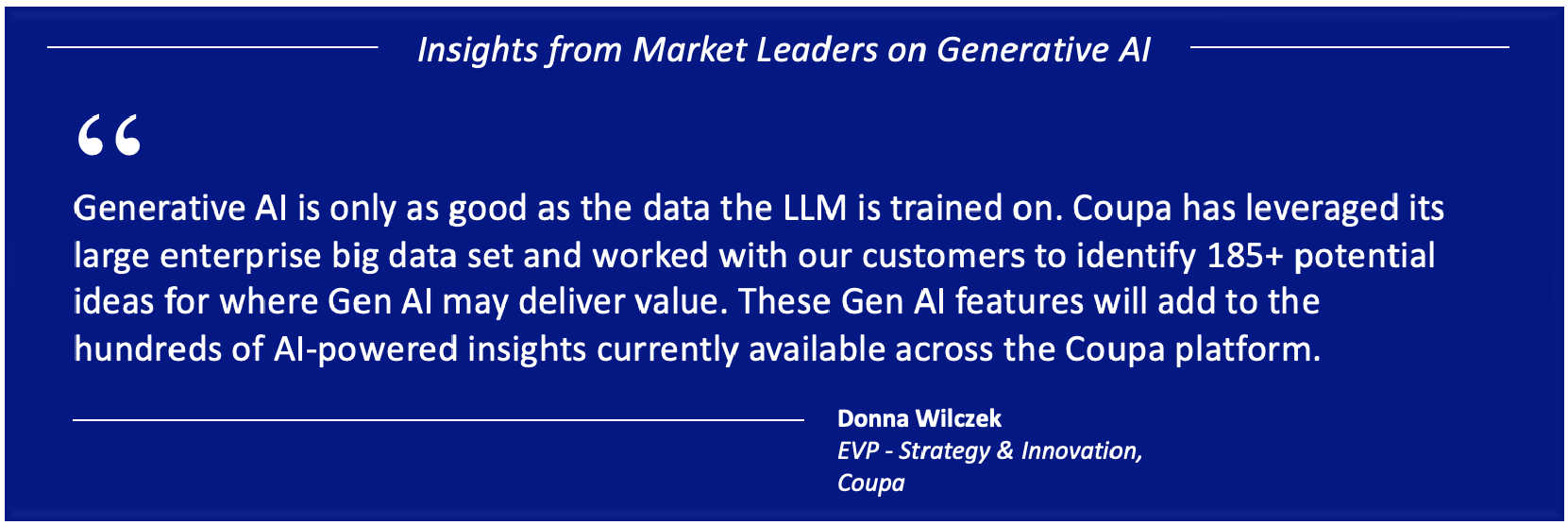
Endnotes:
1 Deloitte, “Generative AI and its impacts on sourcing and procurement,” June 27, 2023.
2 Walter Loeb, “Understanding Walmart’s automated supplier negotiations,” Forbes, November 14, 2022.
3 Deloitte, “Introducing AIOPS.D™: AI-fueled microsolutions,” March 1, 2022.
Authors:
 |  |
| Vinay Rajani Managing Director Deloitte Consulting LLP vrajani@deloitte.com | Mike Deng Principal Deloitte Consulting LLP mikdeng@deloitte.com |
We are grateful to Baber Farooq (SAP), Pascal Bensoussan (Ivalua), and Donna Wilczek (Coupa) for sharing their insights. A special thanks to our contributors: Kamal Taneja, Aakash Saxena, Jonaki Biswas, Anantharam B., and Ayushman Kaul.
